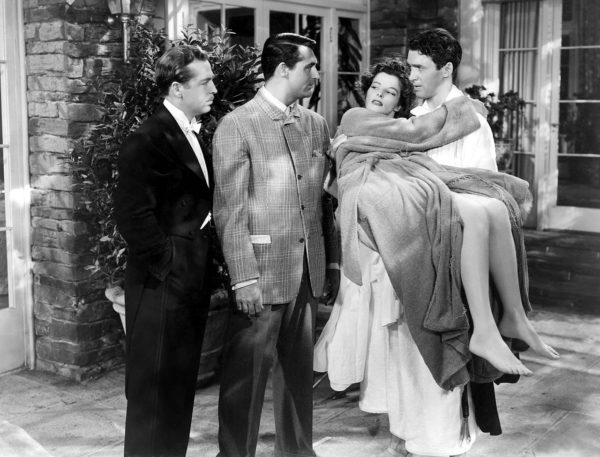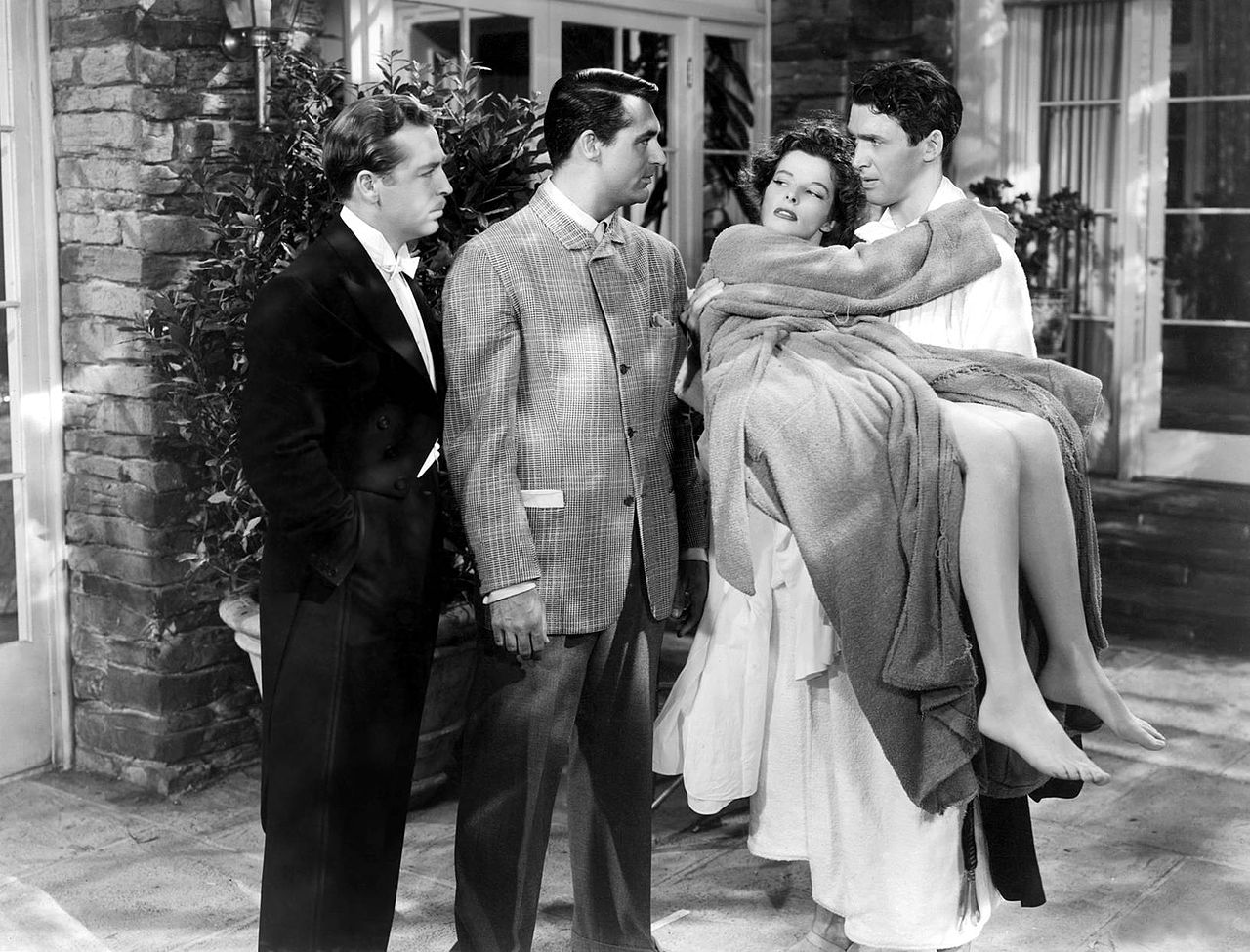
It’s refreshing, and somewhat surprising, to see that George Cukor’s 1940 “The Philadelphia Story” remains as clever as ever. The film’s protagonist is the snobbish socialite Tracy Lord (Katharine Hepburn), who is about to marry a coal-mining executive. Her plans for the wedding are derailed, however, when some uninvited guests appear shortly before the ceremony. They include Tracy’s philandering father, her ex-husband — the suave C.K. Dexter Haven (Cary Grant) — and two reporters from the disreputable Spy magazine, Macaulay Connor (James Stewart) and Elizabeth Imbrie. Complications both playful and poignant ensue. “The Philadelphia Story” boasts a truly terrific cast, an Oscar-winning screenplay by Donald Ogden Stewart and Cukor’s graceful direction, which ensures that the comic hijinks never become grating. Indeed, while everyone involved in the production of “The Philadelphia Story” was solely responsible for a number of great films, this film stands as a testament to the wonders of collaboration.
Since the late 1950s, most film critics have considered the director the main author of a film since it is the director’s vision that guides all other aspects of production. Cukor’s contribution is evident in all of his films. His style is both romantic and refined, and it perfectly suits stories about aristocratic mores. He could invite an audience into the salons of high society and simultaneously create the sense that they were not welcome there. While his elegant tracking shots expressed the gilded nature of high society, his hazy close-ups conveyed the emotions lurking underneath the sophisticated surface. Cukor was the ideal director for “The Philadelphia Story” because only he could capture the characters’ cosmopolitan milieu and their human vulnerabilities.
Yet, I hesitate to call Cukor the auteur of “The Philadelphia Story,” partly because he was not instrumental in the genesis of the film. “The Philadelphia Story” was based on the play of the same name by Philip Barry. While Barry devised the film’s madcap plot and penned most of its droll dialogue, Donald Ogden Stewart deserves credit for making Barry’s play work so well on film. Stewart expanded the roles of C.K. Dexter Haven and Macaulay Connor, ensuring that the film was more focused than the stage version. Furthermore, although the film is based on a play, Stewart’s screenplay is so successful in “opening up” Barry’s scenes that I cannot imagine how it would work on stage. The film moves rapidly from one location to the next, and the characters’ witty repartee seems suited to quick cuts only possible in the cinema.
While the screenplay is partly responsible for the film’s success, it is hard to overestimate Katharine Hepburn’s contribution to the production. She made Barry’s play a success on stage, and she was determined to make it a success on the silver screen as well. In the late 1930s, Hepburn had starred in a series of films that had been artistic triumphs but financial failures. Trade papers called her “box-office poison.” Hepburn saw the film version of “The Philadelphia Story” as a way to resuscitate her film career, so she purchased the film rights, convinced MGM to make it and chose Cukor to direct.
Hepburn could not have picked a better vehicle for herself. The character of Tracy Lord shares innumerable similarities with Hepburn. For example, she comes from an upper-class background, she refuses to be subjugated to traditional gender roles, and she is a tenacious, free-thinking individual. Hepburn clearly understands Tracy’s snobbery and stubbornness, but more importantly, she calls attention to her insecurities. At the start of the film, Tracy seems implacable in her bearing and speech, but we see the doubt that clouds her face when she speaks about her fiancée or the amorous flicker that lights up her eyes when she glances at C.K. Dexter Haven.
Hepburn wanted Clark Gable and Spencer Tracy to star opposite her, but when they proved unavailable, Cary Grant and James Stewart were cast as Haven and Macaulay Connor respectively. Both Grant and Stewart capture the complexities of their characters in their performances. Grant’s role is particularly challenging. How do you explain that Tracy and Haven are attracted to each other even though they’ve already been married and divorced? Yet, Grant presents Haven not only as a careless cad but also as a resolute romantic. Stewart plays an unsuccessful short story writer turned society reporter. Just as Grant reveals that Haven is more than a drunken lout, Stewart uncovers the passionate poet beneath Connor’s ersatz cynicism. When Stewart fervently describes how Tracy is “lit from within … [by] hearth fires and holocausts,” it comes across not as sentimental blabber but rather as a heartfelt declaration of his love for her. Stewart received his only Oscar for this performance, and it was well deserved.
Although I’ve described these elements of the film, I still don’t feel that I’ve captured the sheer delight I felt watching “The Philadelphia Story.” Maybe I liked it because I have a deep appreciation for Cukor’s skills, or because I admire the structure of Stewart’s screenplay, or because Hepburn, Grant and Stewart are three of my favorite actors. Still, it’s rare to see a movie like this — a movie that displays an excess of talent but never lets that talent impede its storytelling, and a movie that remains just as entertaining as it was upon its release nearly 80 years ago.
Contact Amir Abou-Jaoude at amir2 ‘at’ stanford.edu.
